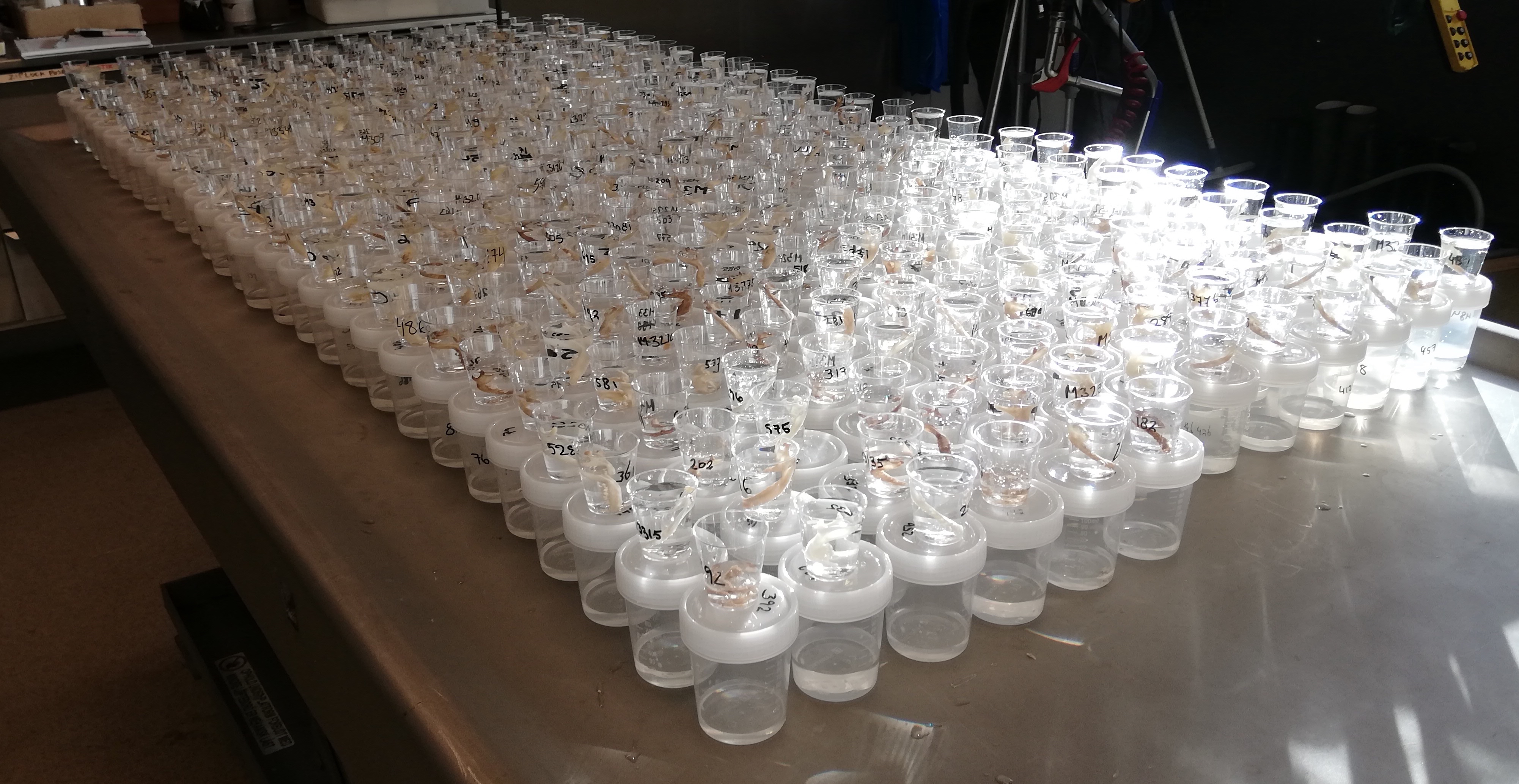News
How long do hedgehogs live? Dr Hedgehog discovers the world’s oldest European hedgehog
A new study shows that hedgehogs may reach a very high age despite inbreeding.
During 2016 over 400 volunteers collected dead hedgehogs throughout Denmark for the research project ”The Danish Hedgehog Project”, which is led by WildCRU Research Associate Dr Sophie Lund Rasmussen. Sophie, who is also known as Dr Hedgehog, examined a total of 697 dead hedgehogs in collaboration with her research team, to describe the general health condition of hedgehogs and understand which challenges they face during their nightly travels in the gardens. All for the purpose of improving the conservation efforts to save this declining and beloved species.
Dr Sophie Lund Rasmussen has just published an important, scientific study showing that some hedgehogs can reach a very high age even despite inbreeding. The study was published in collaboration with Associate Professor Owen Jones at Interdisciplinary Center on Population Dynamics (CPop), Institute of Biology, University of Southern Denmark, Senior Researcher Dr Thomas Bjørneboe Berg from Naturama, and Associate Professor Helle Jakobe Martens, Department of Geosciences and Natural Resource Management, Copenhagen University.
The world’s oldest hedgehog came from Denmark
The research team determined the age of the dead hedgehogs by counting growth lines in thin sections of the hedgehogs’ jawbones. A method similar to the counting of year rings in trees. During hibernation, when the calcium metabolism in the hedgehog is modified, bone growth is reduced markedly or even stopped. This causes densification of the bone resulting in growth lines, where one line represents one hibernation.
Among the samples were individuals that reached the ages of 11, 13 and 16 years! 16 years is the highest, scientifically confirmed age of a European hedgehog. This particular individual came from Silkeborg in Denmark and sadly died in care due to extensive injuries cause by dog a dog attack.
”I vividly remember the day when I counted 16 growth rings in the microscope. I was completely overwhelmed and even shed a tear of joy! Because if a hedgehog can reach an age of 16 years, there is still hope for the population,” Dr Sophie Lund Rasmussen explains.
Despite the high age of a few individuals, the study showed that the mean age of the 388 dead hedgehogs included, was around two years.
Dr Sophie Lund Rasmussen says: ”Even though we found some surprisingly old hedgehogs among the samples, the Danish hedgehogs in general only live to around the age of two. This means that they, in principle, can take part in two breeding seasons before the die, which is at least good news for the population, as they are able to reproduce before they die.”
Inbreeding appears not to affect longevity in hedgehogs
Previously, a study on the genetic composition of the same hedgehogs showed that the genetic diversity of the Danish hedgehog population was low. This background knowledge allowed the researchers to investigate the effects of inbreeding on the longevity of European hedgehogs. To their surprise, inbreeding did not seem to reduce the expected lifespan of the charming “pin cushions”.
”This is very important, as there is a general lack of knowledge on the effects of inbreeding in wildlife. Sadly, many species of wildlife are in decline, which often results in increased inbreeding, as the decline limits the selection of suitable mates. This study now contributes with one of the first thorough investigations of the effect of inbreeding on longevity. Our research indicates that if the hedgehogs manage to survive into adulthood, despite their high degree of inbreeding, which may cause several potentially lethal, hereditary conditions, the inbreeding does not reduce their longevity. That is a rather groundbreaking discovery,” mentions Dr Sophie Lund Rasmussen.
Male hedgehogs have it easier but should be careful in traffic
Additionally, the research showed that male hedgehogs in general lived longer than females, which is uncommon in mammals. And that male hedgehogs are more frequently killed in traffic, especially in rural areas and during the month of July, which is the peak of the mating season for hedgehogs in Denmark.
”The tendency for males to outlive females is likely caused by the fact that it is simply easier being a male hedgehog. Hedgehogs are not territorial, which means that the males rarely fight. And the females are raising their offspring alone. Sadly, many hedgehogs are killed in traffic each year, especially during the mating season in the summer, as the hedgehogs are walking long distances and are crossing more roads in their search for mates, “ explains Dr Sophie Lund Rasmussen.
The various findings of this study have improved our understanding of the basic life history of hedgehogs, and will hopefully improve the conservation management for this beloved and declining species.
You can follow the research of Dr Sophie Lund Rasmussen here:
-
 Hedgehog jawbones which are used for age determination research © Sophie Lund Rasmussen
Hedgehog jawbones which are used for age determination research © Sophie Lund Rasmussen -
 388 hedgehog jaws being prepared for age determination investigation © Sophie Lund Rasmussen
388 hedgehog jaws being prepared for age determination investigation © Sophie Lund Rasmussen





